第83章 12(2)
Some birds, again, are well adapted for flight, their wings being large and strong. Such, for instance, are those that have talons and live on flesh. For their mode of life renders the power of flight a necessity, and it is on this account that their feathers are so abundant and their wings so large. Besides these, however, there are also other genera of birds that can fly well; all those, namely, that depend on speed for security, or that are of migratory habits. On the other hand, some kinds of birds have heavy bodies and are not constructed for flight. These are birds that are frugivorous and live on the ground, or that are able to swim and get their living in watery places. In those that have talons the body, without the wings, is small; for the nutriment is consumed in the production of these wings, and of the weapons and defensive appliances; whereas in birds that are not made for flight the contrary obtains, and the body is bulky and so of heavy weight. In some of these heavy-bodied birds the legs are furnished with what are called spurs, which replace the wings as a means of defence. Spurs and talons never co-exist in the same bird. For nature never makes anything superfluous; and if a bird can fly, and has talons, it has no use for spurs; for these are weapons for fighting on the ground, and on this account are an appanage of certain heavy-bodied birds. These latter, again, would find the possession of talons not only useless but actually injurious; for the claws would stick into the ground and interfere with progression. This is the reason why all birds with talons walk so badly, and why they never settle upon rocks. For the character of their claws is ill-suited for either action.
All this is the necessary consequence of the process of development.
For the earthy matter in the body issuing from it is converted into parts that are useful as weapons. That which flows upwards gives hardness or size to the beak; and, should any flow downwards, it either forms spurs upon the legs or gives size and strength to the claws upon the feet. But it does not at one and the same time produce both these results, one in the legs, the other in the claws; for such a dispersion of this residual matter would destroy all its efficiency. In other birds this earthy residue furnishes the legs with the material for their elongation; or sometimes, in place of this, fills up the interspaces between the toes. Thus it is simply a matter of necessity, that such birds as swim shall either be actually web-footed, or shall have a kind of broad blade-like margin running along the whole length of each distinct toe. The forms, then, of these feet are simply the necessary results of the causes that have been mentioned. Yet at the same time they are intended for the animal's advantage. For they are in harmony with the mode of life of these birds, who, living on the water, where their wings are useless, require that their feet shall be such as to serve in swimming. For these feet are so developed as to resemble the oars of a boat, or the fins of a fish; and the destruction of the foot-web has the same effect as the destruction of the fins; that is to say, it puts an end to all power of swimming.